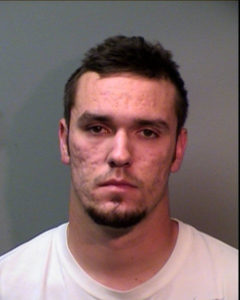Martin Pulga is a psychopath who, at 28, is the prime age to start a career as a serial killer. The average age of serial killers was one of many data points I amassed while developing this key character for my latest novel, For Sissy. My aim was to create a villain who is believable and interesting, but also repellent. The reader must live in his head at times, but not grow comfortable there. On the other hand, I didn’t want him to be so repugnant that the reader would run away after being in that troubled mind.
Since I had to be the very first person to get in his head, I needed to understand what Martin should be. He had to be able to hold a job while maintaining a secret life as a homicidal maniac and also able to muster an element of charm. He should possess a deep narcissism, yet display dueling characteristics, convincing himself he is superior to others, while also harboring a festering sense of inadequacy. I needed him to be deeply mentally ill and confused by what he saw and heard at times.
That was a tall order, so I hit the Google and started studying analyses of serial killer psychosis and actions, as well as other forms of mental illness. I studied some of the world’s most notorious killers, from whom I

Gary Bundy, as photographed by Jerry Gay
could gain a sense of behaviors and motivation.
Ted Bundy was on my list, for his ability to act charming, despite being a homicidal jerk.
I also read Katherine Ramsland’s Confessions of a Serial Killer, The Untold Story of Dennis Rader, the BTK Killer. This book details Rader’s life, including his childhood influences and his long span of killing. Much of the book features Rader’s own accounts of his acts, and it will be an interesting read to anyone who wants to learn more about a serial killer’s mentality.
I looked at Rader in attempt to fathom the characteristics of serial killer who carried on what seemed to be a normal life, with a job, children and wife. At the same time, he obsessed over his compulsion to kill women, constantly planning, knowing that, eventually, the urge would take over and he would act on it.

Dennis Rader with his daughter. Photo credit Kerri Rawson/Readers Digest
Can you imagine discovering your spouse has been killing people for thrills over the course of decades?
My killer, Martin, has held together his mask of normality, keeping a good job by carefully choosing a career in which he can travel and without the necessity of forming close, workplace relationships – something he has discovered he is unable to do.
Martin needs to demonstrate an elevated sense of his own superiority, but one of that is a false front, hiding a cringing insecurity. For this, I found a great example in Elliot Rodger — including this despicable spree killer’s own “manifesto.” This creep possessed a wild hodgepodge of passions, including feelings of despairing inferiority, envy of popular men and misery at not being able to make friends, all combined with a grandiose sense of his own eminence and the conviction that women should be punished for not giving him the sex he thought he was owed. I actually gave Martin some of Elliot Rodger’s own words in an early draft, but, interestingly, an editor told me they didn’t ring true, so I chopped them.

Elliot Rodger, king of the brooding selfie
Finally, I needed Martin to be deeply disturbed from the events of his past. For this, there was no better a study that the notorious Ed Gien, a serial killer who inspired a couple of my favorite horror stories, Psycho and The Silence of the Lambs, as well as being the basis of the killer in Texas Chainsaw Massacre. Gien was amazingly disturbed, the product of an acutely damaging upbringing who chose serial killing, as well as body snatching and human skin crafts, in a horrifying attempt to right the listing vessel of his shattered psyche.
During For Sissy, Martin is unraveling. The mental illness that contributes to his actions is emerging and increasing during the novel, and its power is pulling apart any semblance of normality that Martin had scraped together. For this, I studied a number of accounts of psychological disorders, which I won’t detail here to avoid spoilers.

Ed Gein
It is my hope that my research helped me weave together the underlying fabric of a character who is believable and disturbing, one that has his own, desperate and despicable character arc that clashes inevitably with that of my protagonist, Emerson Crandall.
My only concern at this point is wondering if my web trail made me a person of interest to the NSA. I’ll let you know if things start heating up here.
Oh and a couple last fun facts about Martin:
His last name, Pulga, means “flea” in Spanish.
For inspiration, I found this photo on line (below). When I picture Martin’s driver’s license photo and mug shot, this is the look I imagine. I found the image through a random web search. I only just learned at the time of this writing (through a Google image search) that this is quarterback Casey Pachall. Oops! Sorry Casey. I’m sure you’re a nice guy.

Recent Comments